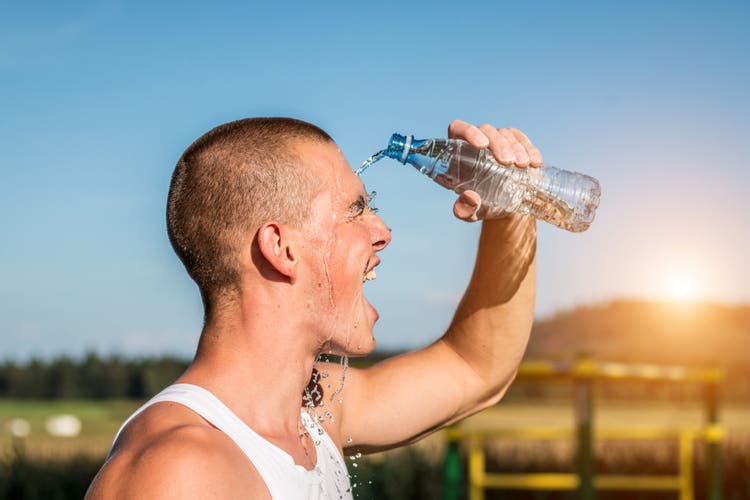Can Heat Training Boost Performance? Science Says Yes

Hot weather is its own workout reward: Beautiful sunshine, lots of sweat and you really feel like you’re getting it done. But yes, it is wicked hot, and depending where you live, it’s humid. It can be brutal. You might want to try a hot-weather trick to boost your performance as high as the mercury: Take a hot bath first.
Didn’t see that one coming, right? Well, as dubious—and sweltering—as it sounds, research has shown that a hot soak may help your body acclimate to hotter outside temperatures. How? When your body sweats more, it releases more internal heat. By stepping up how quickly your body can do this without having to exert yourself, you’ll adapt to high temps faster and ease any stress related to the heart.
In a Journal of Strength and Conditioning Research study, scientists asked runners to prep for a 5K in the heat by pedaling exercise bikes at top speed in sweat-inducing room temperatures. They did this for 90 minutes every day for five days. The result? Improved running times by 6.5 percent. And according to The New York Times, these times were slightly better than when the same study participants practiced heat acclimation and precooling methods (such as dousing themselves in cold water or knocking back an ice-cold drink before training.)
This is where the hot bath comes in: The study author recommends a deep dunk in a steaming bath of at least 104 degrees Fahrenheit in the days leading up to your hot-weather training. You also can hightail to the hot tub after your workout, the research notes. For example, give yourself a 30-minute soak after a 30-minute workout.
Sound … hot? Perhaps. But if it improves workout performance, it might be worth the plunge.
Just remember: No matter how ready you feel to take on hot-weather training, should you start feeling sick, dizzy or any other symptom of heat illness, head for the shade and drink some fluids.
This post originally appeared on life.spartan.com.
Always check with your health care provider before you make changes to your training or diet regimen.
Photo credit: sestovic, Thinkstock